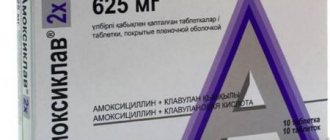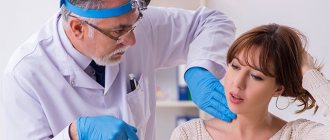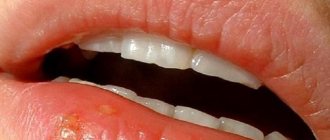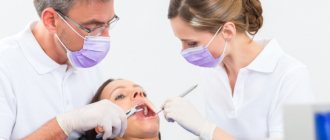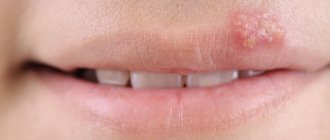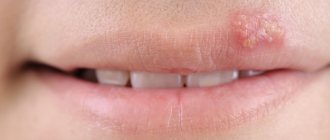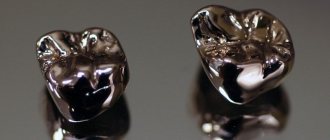Hypertrophic pharyngitis is one of the varieties of the chronic form of the disease. It usually begins to appear 6-8 months after acute inflammation was diagnosed, which was not properly treated. The hypertrophic form of pathology affects not only the posterior wall of the pharynx, but also its lateral parts.
With pathology, the mucous membrane of the pharynx not only becomes thicker, but its density also increases. These changes are pathological, and as a result, it begins to function incorrectly and becomes inflamed. Also with this disease, the appearance of lymphoid granules is noted, which look like pink grains. The disease can appear in people of any age, but more often affects adults, since they often do not properly treat the acute form of the disease and suffer it on their feet. Gradually, disruption of the pharyngeal mucosa can also spread to the uvula. Hypertrophic pharyngitis symptoms increase as the damage to the mucous membrane progresses.
Causes
The disease develops against the background of the fact that negative factors cause excessive activity of the immune system, due to which it begins to provoke the development of a number of neoplasms on the mucous membrane, associated with the detection of even minor pathogens. As a result, inflammation develops and tissue changes occur. The main factors causing hypertrophic pharyngitis, in addition to its advanced acute form, are the following:
- living in areas with unfavorable environmental conditions;
- working in hazardous industries in violation of safety rules;
- long regular stay in a room in which the air is very dry and warm;
- smoking – not only active but also passive smoking has a negative effect on the mucous membrane and the body as a whole;
- abuse of alcoholic beverages - even not strong ones, they irritate and damage the tissues of the pharynx, making them more susceptible to pharyngitis;
- diseases of the cardiovascular system, in which blood circulation in the tissues of the pharyngeal mucosa is disrupted, as well as those that lead to congestion in the respiratory system;
- serious metabolic disorders, especially against the background of pathologies of the endocrine system;
- regular occurrence of allergies;
- disturbances in the structure of the pharynx;
- constant significant lack of vitamins.
Chronic pathologies of the nasopharynx, such as tonsillitis, sinusitis and rhinitis, can also cause the disease. Pathogenic bacteria will abundantly penetrate the mucous membrane and remain dormant in it until factors unfavorable for the immune system appear. When they develop an exacerbation of the disease.
Preventive measures
To avoid throat problems, you must often be in the fresh air. When a person inhales abundantly, the mucous membranes of his respiratory tract are moistened and well coated with saliva, which has an antibacterial effect.
To maintain health, you need to drink enough water, eat a quality and balanced diet, and take vitamins. You should definitely give up bad habits, especially smoking, which causes severe damage to the mucous membranes of the pharynx.
It is useful to harden yourself, adhere to a certain daily routine, and take a contrast shower. It is not advisable to use antibiotics frequently. These medications are addictive.
Kinds
This form of the disease can have two types. Depending on which of them is diagnosed, the exact treatment method is determined. Granular hypertrophic pharyngitis affects only the back wall of the pharynx. With it, tissue swelling is not felt so much at the onset of the disease, which is why not all patients seek medical help in a timely manner.
Lateral hypertrophic pharyngitis is manifested by more acute pain and difficulty breathing. It is extremely difficult to ignore it for a long time, which is why treatment most often begins on time. The diagnosis is made after examining the patient's pharynx.
Pimples appeared on the tongue: treatment at home
Having determined the nature of the rash, the doctor can prescribe a comprehensive treatment of the disease (drug and herbal treatment) or non-drug treatment at home. Pimples on the root, tip, and near the frenulum of the tongue can be removed using folk remedies.
Herbal medicine
Herbal decoctions and infusions effectively remove pimples both on the tip and at the base of the tongue. The most effective rinses are chamomile, St. John's wort, and calendula. Herbal decoctions are especially effective when the rashes are inflamed.
Method for preparing the decoction: pour a teaspoon of herbs into a glass of boiling water, leave for about 15 minutes, and cool. You need to rinse your mouth 2-4 times a day.
Infusions and decoctions can be taken orally, this will help alleviate the symptoms of the disease, relieve inflammation, and help stabilize metabolic processes.
Compresses and lotions
If the formations are inflamed, pain and inflammation can be relieved by applying a cotton swab moistened with a herbal decoction of chamomile and calendula to the affected surface.
You can numb the surface of the tongue using therapeutic and prophylactic toothpaste, which is applied for 2 minutes. The paste relieves pain, has a calming, anti-edematous and anti-inflammatory effect.
Rinsing with antiseptic solutions
They help treat inflammation of the mucous membrane, eliminate tubercles on the tongue both at the very beginning and closer to the throat. In the fight against the disease, the use of Chlorophyllipt and Chlorhexidine is common. The preparations can be used as rinses and are effective for irrigating the oral cavity. Procedures are carried out several times a day.
Forecast
With timely, complete and systematic treatment of the disease, the prognosis for the patient is favorable. In this case, it is possible to stop pathological changes in the mucosal tissues. After quality therapy, exacerbations of the disease are extremely rare.
If treatment is started late, when the throat lesion is already quite serious, then the prognosis for the patient is relatively positive, since it will not be possible to ensure a long remission, but at the same time the risk of complications will be eliminated.
Causes of pimples in the mouth
70% of red, white or pinkish rashes in the oral cavity, including on the tongue, indicate the presence of a serious dental disease. The asymptomatic course of the disease does not mean that the “trouble” will go away on its own. However, prescribing treatment on your own, guided by the advice of friends or recommendations from the Internet, is dangerous.
Important!
In principle, there cannot be acne on the tongue. Purulent skin rashes develop due to inflammation of the sebaceous glands, which are not present in the mouth. Accordingly, we call those pimples that appear in the oral cavity “pimples” by analogy. Just by external similarity.
There are several reasons for the appearance of irritations that visually resemble pimples:
- mechanical damage. A prick with a fish bone, a scratch, a burn from hot coffee can provoke a similar pathology;
- allergy. Not necessarily to foods; a seasonal allergic reaction is possible, manifesting itself in such an unusual way;
- viral and infectious diseases. Herpes, rubella, scarlet fever and ARVI sometimes manifest themselves as rashes in the mouth;
- fungal infection (candidiasis);
- stomatitis. Usually, with stomatitis, pimples first appear on the gums, but sometimes red spots with a whitish halo, which react sharply to touch or spicy/hot food, form over the entire lingual surface.
There is no point in waiting until diseases become chronic. In 98% of cases, such pathologies are treated quickly and inexpensively, if you do not neglect the condition and do not self-medicate.
What not to do
During the treatment period there are certain restrictions, by violating which the patient risks significantly aggravating his condition. The doctor will not be able to guarantee the patient a positive result of therapy if the following actions are allowed:
- smoking during treatment;
- use of alcohol preparations for gargling;
- eating spicy food;
- staying in a dusty room;
- violation of medical instructions regarding treatment.
If there are no violations in the course of therapy, then it is possible to stop the disease at the beginning of its development without the use of surgical methods of therapy. Treatment of hypertrophic pharyngitis in adults and children is the same.
Candidiasis
The most common cause of candidiasis is decreased immunity. Therefore, thrush often occurs in the mouth of infants. Thrush is characterized by pimples in the throat, covered with a white cheesy coating. The spots are localized on the tongue, behind the arches, tonsils and soft palate.
Important symptom! After removing the top layer, small erosions are visible, from which droplets of blood are released. The rashes cause discomfort to patients.
Signs of thrush:
- pain and dryness in the throat;
- itching and burning;
- tonsil hypertrophy;
- redness of the throat;
- elevated temperature is observed mainly in children;
- decreased appetite.
Untreated thrush becomes more complicated. Ulcers appear in the mouth and fester. The infection spreads to the larynx. Yeast-like fungi Candida are able to penetrate the digestive system.
With the bloodstream they can spread throughout the body, leading a person to sepsis with a fatal outcome.
During treatment, systemic antifungal drugs are prescribed - Fluconazole, Mycostatin, Fucis, Itraconazole. Medicines are prescribed in courses. The doctor selects medications based on the results of the smear, taking into account the severity of the infection.
Gargles with boric acid and oak infusion are prescribed. The oral cavity is lubricated with Lugol's solution, Fukortsin, sea buckthorn oil and antifungal creams. Ultraviolet and laser rays are used in complex treatment.
Diagnostics
Only an external examination of the pharynx is not enough to identify not only the disease itself, but also the causes of its occurrence, as well as the condition of the body. Because of this, the doctor, having identified pharyngitis by eye during the initial examination, necessarily prescribes further tests to the patient, which help to obtain a complete picture of the health condition and select the most effective treatment.
1. A swab from the pharynx followed by inoculation on a nutrient medium. It is necessary to determine the composition of pathogenic microflora and its sensitivity to certain antibiotics.
2. Biochemical blood test. It requires venous blood. The study reveals the presence of antibodies to certain inflammatory agents, hormonal parameters and the presence or absence of malignant cells.
3. Clinical blood test. Blood from a finger is used. Shows the percentage of the ratio of its main components. Deviation of one or another up or down makes it possible to detect a number of pathologies.
4. General urine analysis. The study of the material allows you to accurately assess the severity of inflammation in the body, as well as whether there are any disturbances in the functioning of the kidneys against its background.
5. Biopsy of tissue of the pharyngeal mucosa. Not always prescribed. The procedure is necessary if there is a suspicion of the development of a cancer process. When examining a tissue sample, the presence or absence of malignant (cancerous) cells in the mucosa is determined.
If necessary, an electrocardiogram and x-ray of the sinus area may also be prescribed. These procedures are rarely required. They are usually carried out if complications of the disease begin to develop. In young children, an X-ray of the lungs may also be necessary, since quite often, against the background of inflammation of the larynx, pneumonia or bronchopneumonia appears quickly enough.
Methods for treating acne on the back of the throat
Before treating pimples in the throat, you need to find out the cause of their occurrence. Only a medical specialist can make an accurate diagnosis, so the sick person must go to the doctor and get tested. To determine the disease, it is usually enough for the doctor to examine the patient’s mucous membranes of the throat. Sometimes a general blood test is prescribed to detect an infection or allergic process in the body.
To confirm the presence of the virus, your doctor may take a swab of your tonsils and pharynx. Based on the results of the examination and tests, the doctor prescribes the optimal therapy. How to treat pimples in the throat?
- For a bacterial infection, antibiotics should be taken. Antibiotic medications are used for pharyngitis.
- For viral infections, anti-inflammatory medications are prescribed.
- During a fungal infection, antimycotic drugs are prescribed.
- For an abscess, surgical intervention is used in most cases. The ulcers are removed, and after the operation it is necessary to use detoxification and antibiotic medications.
Additionally, the doctor may recommend that the patient gargle with a saline, iodine or soda solution, a decoction of calendula or chamomile, or Furacilin. Rinsing should be done every two hours.
During the procedure, a sick person should try to absorb the affected area of the throat as much as possible with the medicinal solution. It is useful to do inhalations based on infusions of medicinal plants: sage, eucalyptus, aloe, linden.
A sick person should remain in bed, take vitamin complexes, eat only soft and light foods that do not irritate the throat, and drink plenty of warm liquids. To get rid of pathological formations in the throat, modern clinics offer ultraviolet and laser therapy and other physiotherapeutic measures.
